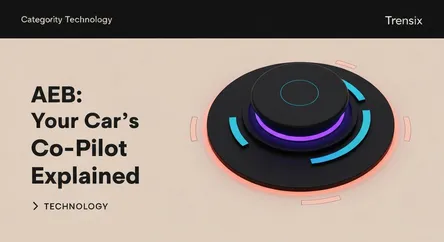Technology
AEB: Your Car's Co-Pilot Explained

Discover Automatic Emergency Braking (AEB), the life-saving car safety feature that detects and prevents potential front-end collisions.
What is it?
Automatic Emergency Braking (AEB) is an advanced driver-assistance system that helps prevent or mitigate collisions. Using forward-facing sensors like radar, cameras, or lidar, the system constantly monitors the road ahead for potential hazards, such as stopped or slowing vehicles and sometimes pedestrians. If a potential collision is detected, AEB first alerts the driver with visual and audible warnings. If the driver fails to react in time, the system automatically applies the brakes to avoid the accident or reduce its severity.
Why is it trending?
AEB is trending because of its proven effectiveness in reducing accidents. Major safety organizations, like the National Highway Traffic Safety Administration (NHTSA) and the Insurance Institute for Highway Safety (IIHS), have shown that AEB significantly cuts down on rear-end crashes. This has led to a push from both regulators and automakers to make the technology a standard feature rather than a luxury add-on. A voluntary commitment by 20 major automakers has accelerated its adoption across new vehicle lineups, making advanced safety more accessible to the average consumer.
How does it affect people?
For drivers and passengers, AEB acts as a crucial safety net, providing an extra layer of protection against human error, such as distraction or delayed reaction time. It offers peace of mind and demonstrably reduces the risk of injury and fatalities in front-to-rear collisions. For society, the widespread adoption of AEB contributes to safer roads for everyone, including pedestrians and cyclists who are often detected by more advanced systems. This technology is a cornerstone of modern vehicle safety, fundamentally changing how cars protect their occupants and those around them.